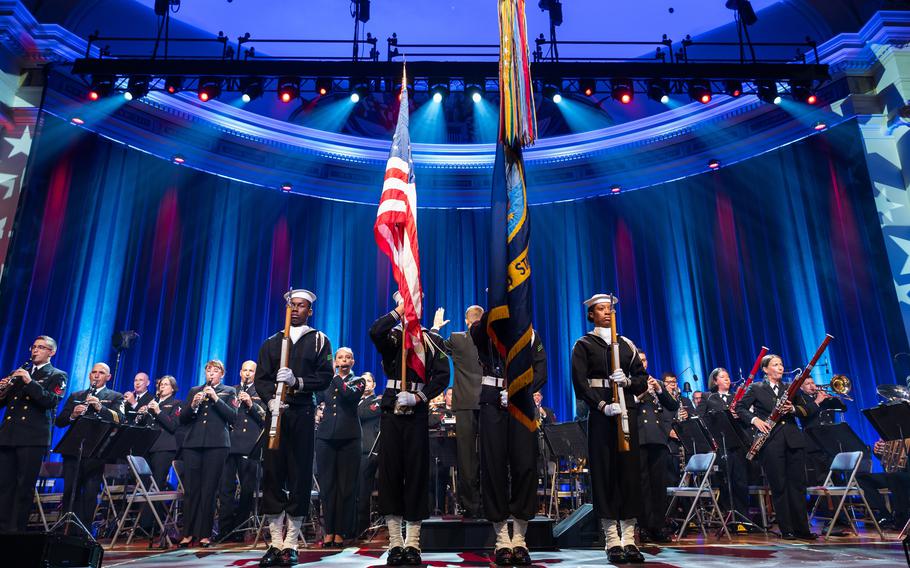
Members of the U.S. Navy Ceremonial Guard present the colors during a U.S. Navy Band performance celebrating the U.S. Navy’s 249th birthday at DAR Constitution Hall in Washington, Oct. 6, 2024. (Adam Grimm/U.S. Navy)
“Resolved, That a swift sailing vessel, to carry ten carriage guns, and a proportionable number of swivels, with eighty men, be fitted, with all possible despatch, for a cruise of three months...”
It was these words from an Oct. 13, 1775, resolution of the Continental Congress that established the U.S. Navy 249 years ago.
Two and a half centuries later, America’s naval service is the world’s most advanced. It counts over 330,000 active-duty sailors (including over 55,000 officers), 57,000 reservists and 219,000 civilians, on top of hundreds of ships.
Though the Navy initially formed in 1775, it functionally dissolved after the American Revolution ended. It was reestablished in 1794 amid threats to American merchant vessels, and permanently institutionalized with the creation of the Department of the Navy in 1798.
By the end of the World War II, its status as the world’s most powerful naval force was clear. Although the last decade has seen it surpassed by China in absolute ship numbers, the U.S. Navy remains the world’s largest by tonnage, due in large part to its unrivaled count of aircraft carriers.
Those serving in the world’s most powerful navy have been celebrating their heritage this month under the theme “Warfighting Strength and Readiness.”
The U.S. Navy Band performed a concert in Washington a week before the official birthday. A rock concert was also held in Norfolk, Va., and attended by hundreds of people — including Chief of Naval Operations Adm. Lisa Franchetti, Adm. Daryl Caudle and U.S. Rep. Jen Kiggans.
Smaller celebrations and well-wishes also took place across the country: from Honolulu to San Diego to Marine Corps Air Station Cherry Point in Havelock, N.C., to Naval Air Station Patuxent River in Maryland, among others.
A storied Navy meets 21st century challenges
The Navy’s birthday comes just two weeks after its Military Sealift Command (MSC) celebrated 75 years of service. The command operates about 125 ships, crewed by civilians, that replenish U.S. Navy ships and preposition important cargo.
MSC has come under the spotlight for its severe manpower shortage, with the command currently employing about half as many mariners as experts believe it needs.
Similar concerns are being mirrored in the Navy as a whole. A Government Accountability Office report released in September found most of the service’s vessels are too short-staffed to complete routine maintenance at sea.
The labor shortages come as some lawmakers and Marine Corps officials express concern about the size of the Navy’s fleet compared to China’s, and as the force responds to missiles and drones launched by Iran and its proxies in the Red Sea — many of which are cheap for militants to launch and expensive for the Navy to shoot down.
Nonetheless, the Navy is moving to meet the challenges. Its Project 33 sets goalposts for speeding up ship maintenance, reducing churn, and incorporating more drones and autonomous systems. Meanwhile, it is acquiring three new warships and appears on track to meet its annual recruiting goal for the first time in years.
The service’s moves were mirrored in the forward-facing tone of Franchetti, who spoke at the Norfolk, Va., ball: “As we head into our 250th birthday next year, I can’t wait to see what this year brings.”